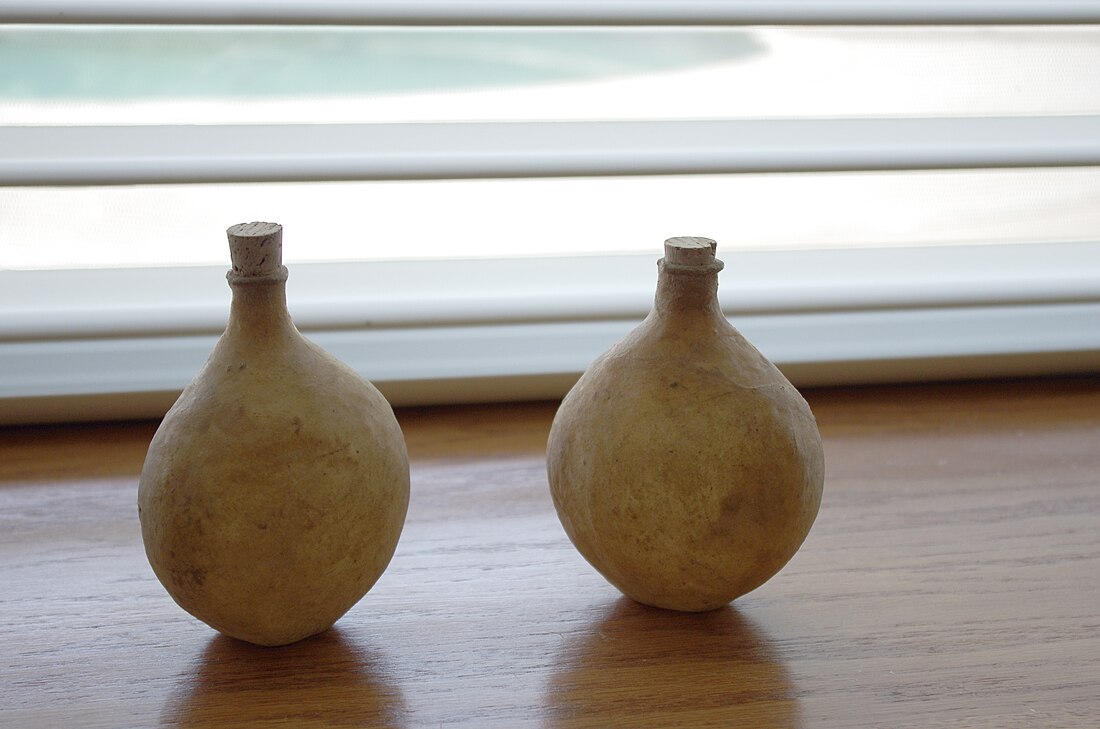Attar
Types of essential oils From Wikipedia, the free encyclopedia
Attar, also known as ittar, is an essential oil derived from botanical or other natural sources. Most commonly these oils are extracted via hydrodistillation or steam distillation. Attar can also be expressed by chemical means but generally natural perfumes which qualify as attars are distilled with water. The oils are generally distilled into a wood base such as sandalwood and then aged. The aging period can last from one to ten years depending on the botanicals used and the results desired. Technically attars are distillates of flowers, herbs, spices and other natural materials such as baked soil over sandalwood oil/liquid paraffins using hydrodistillation technique involving a still (deg) and receiving vessel (bhapka). These techniques are still in use at Kannauj in India.[1]
This article needs additional citations for verification. (April 2020) |

History
Summarize
Perspective
The word 'attar' is believed to have been derived from the Persian word itir.[2] The Persian physician Ibn Sina was the first to derive the attar of flowers and used distillation to do so.[3] The earliest recorded mention of the techniques and methods used to produce essential oils is believed to be that of Ibn al-Baitar (1188–1248), an Al-Andalusian (Muslim Iberia) physician, pharmacist and chemist.[4]
The Egyptians were famous for producing perfumes throughout the ancient world. They were formulated from plants and flowers before they could be added to other oils. It was later refined and developed by al-Shaykh al-Rais,[5] a renowned physician who made a distinctive type of aromatic product. He was referred to as Abu Ali Sina. He was among the first people to come with the technique of distillation of roses and other plant fragrances.[6] Liquid perfumes used to be a mixture of oil and crushed herbs until his discovery where he first experimented with roses.[7]
In Yemen, a special variety of attar was introduced by Arwa al-Sulayhi, the Yemeni Queen. This type of attar was prepared from mountainous flowers and given as a gift to the monarchs of Arabia.[8]
Abul Fazal Faizee[9] gives another verdict of how Attar was used to making the Mabkhara-incense-burner. The barks that were used in Akbar's time, according to Faizee, were aloe, sandalwood, and cinnamon. Resins such as myrrh and frankincense, animal substances such as musk and anbar, were used along with roots of special trees and a few other spices. The ruler of Awadh, Ghazi-ud-Din Haidar Shah used to prepare fountains of attar around his bedroom. These fountains would create a very pleasant fragrant and romantic atmosphere by functioning continuously.[10]
Uses and types
Summarize
Perspective
Attars are generally classified based on their perceived effect on the body. 'Warm' attars, such as musk, amber and kesar (saffron), are used in winter, as they are believed to increase body temperature. Likewise, 'cool' attars, such as rose, jasmine, khus, kewra and mogra, are used in summers for their perceived cooling effect on the body.[11]
Although attars are mostly used as a perfume, they are also used for medicinal and aphrodisiacal purposes.[12][better source needed]
Musk
Musk is a class of aromatic compound produced by a male Siberian musk deer, a rare species deer found in the Himalayas. The substance used in creating musk can be produced only by a mature male musk deer, and the process of acquiring it involves killing the deer. As such, its demand has led to the endangerment of most musk deer species, which in turn has aided the rise of synthetic musk, known as 'white musk'.[citation needed]
Natural musk is commonly mixed with medicines and confectionary. Purported medicinal benefits range from working as an antivenom and strengthening organs.[13][14]
Ambergris
Ambergris, also known as Anbar, is a waxy substance excreted from sperm whales and retrieved from beaches and the sea. It is thought to have been used by humans for at least 1,000 years, and has a musky aroma. Ambrein, an alcohol used as a scent preservative, is extracted from ambergris.[15]
Attar of roses
Spirituality and religion
For hundreds of years, attars were considered in some societies, mainly in Islamic cultural folk to be something that attracted angels and warded off evil spirits. Sufi saints and spiritual aspirants would adorn themselves with these scents to assist them in their journey towards enlightenment.[16]
The different sects of Hinduism worship deities through household and temple offerings and Sufis in Islamic shrines and sacred khanqah's. Attars are commonly used within the incense and food used as offerings.[17]
See also
References
Further reading
Wikiwand - on
Seamless Wikipedia browsing. On steroids.
